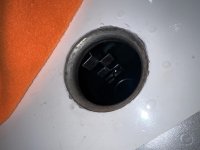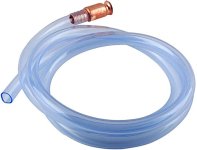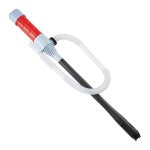coyoteheineken
I'm New Here
Hello!
Curious for an answer, does anyone know what these tabs represent in both fuel tanks of our RV8?
There are four tabs, the bottom of which is the "tallest", and it is located facing forward. These tabs are all one piece and this component is hanging from the top of the fuel tank. There are four tabs total with the top tab facing aft and alternating as they extend deeper into the tank. You can also see the reflection of the tabs on the fuel in the tank.
My guess is that since each tank is 21 gallons, that the top of each tab is approximately 5 gallons while the plane is on the ground, with a full top off being slightly above the top tab at 21 gallons, but I am not certain and I don't know whether or not to trust the tank fuel info on the Dynon.
Before I drain a tank and fill it up a few gallons at a time, has anyone seen these before that could give me an accurate answer?
Thanks everyone!
Curious for an answer, does anyone know what these tabs represent in both fuel tanks of our RV8?
There are four tabs, the bottom of which is the "tallest", and it is located facing forward. These tabs are all one piece and this component is hanging from the top of the fuel tank. There are four tabs total with the top tab facing aft and alternating as they extend deeper into the tank. You can also see the reflection of the tabs on the fuel in the tank.
My guess is that since each tank is 21 gallons, that the top of each tab is approximately 5 gallons while the plane is on the ground, with a full top off being slightly above the top tab at 21 gallons, but I am not certain and I don't know whether or not to trust the tank fuel info on the Dynon.
Before I drain a tank and fill it up a few gallons at a time, has anyone seen these before that could give me an accurate answer?
Thanks everyone!
Attachments
Last edited:







